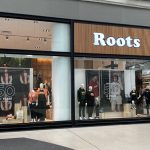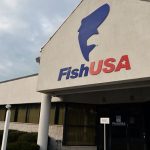The two brands at the center of the largest ever merger/acquisition in the sporting goods industry werent on the floor of the WSA show in Las Vegas last week, but the aisles were filled with speculation and talk about what the deal that brings together two of the industrys three largest athletic brands will mean to each brand and to the market as a whole.
The rumor wire heated up to a white hot level last Tuesday after being dormant for almost a year. The deal announced Wednesday morning goes beyond the sporting goods landscape in its scope and will have a much broader impact on the market. This may not come close to the level of the recently announced P&G/Gillette deal, but it may be treated in the same light as HP/Compaq, Wachovia/First Union, or BofA/Fleet.
The deal certainly injects some new energy into a market that has been unbalanced for some time. The sporting goods industry now has a Coke/Pepsi situation again at the top for the first time since the early 90s.
If you were away on a tropical island last week you may not know that adidas, per the approval of the Boards of adidas-Salomon AG and Reebok International Ltd., will acquire all of the outstanding shares of Reebok for $59.00 per share in cash, which represents a premium of 34.2% over the closing price of Reeboks stock on August 2, 2005. The transaction value is approximately 3.1 billion ($3.8 billion) including the assumption of net cash of 69 million ($84 million). The transaction is subject to the approval of Reeboks shareholders (with a 2/3 majority vote required in Mass.) as well as to the regulatory approvals and customary closing conditions. The deal is expected to close in the first half of 2006.
The combined entity would have seen 8.9 billion in sales in 2004 and pro forma operating profit of about 820 million.
adidas chief Herbert Hainer said they are paying 1x trailing 12-month sales and 11.7x EBITDA for the same period. With expected synergies, adidas sees the deal closer to 7.9x trailing 12-month EBITDA.
Reebok chairman and CEO Paul Fireman is expected to stay on to run Reebok until the deal is complete and perhaps a bit longer to make sure they work out all the kinks. Reebok will continue to operate under its own name and its headquarters will remain in Canton, Mass. Adidas said it did not expect any significant reductions in the work forces of both companies after the acquisition, but did say they would find 125 mm in synergies by year three following the close of the deal, with roughly 40% coming from sales, marketing, and distribution, 40% from shared services and IT, and 20% from global operations. The two companies were the two early adopters of SAPs footwear and apparel solution and were central to the development of the product, but some at both companies rolled their eyes when it was suggested that SAP integration would be simple.
The deal is an obvious move by both companies to attempt something radical in an attempt to gain some level of parity with Nike, Inc. Once Nike put in place a more aggressive global multi-brand strategy that had at its core the ability to stratify the retail market by brand instead of by segmented product or category, the game had clearly changed. Nikes ability to position Starter at the base of the pyramid servicing the mass retail market, while using Converse to service the middle of the pyramid, gave Nike cover to focus brand efforts at the top of the model. The only problem for the competition is that they didnt have multiple brands to play with, and they didnt have the depth of technology to play at the different levels of the distribution matrix.
While adidas and Reebok leaders both say that the two will be run as separate companies, adidas will now have the ability to create a similar model to Nike, Inc. by using Reeboks Logo Athletic brand in the mass channel, while Reebok can be used in the middle of the pyramid where it plays best. adidas can be positioned at the top of the model along with the Rbk sub-brand, further building brand cache. The other similarities are quite interesting as well. Nike and adidas each now have a golf division, a hockey division, and a brown shoe business.
Both Hainer and Fireman insist that the brand positioning of both brands will be maintained, but there will certainly be situations where there is overlap over messages. Herzo will make that call when the time comes. Hainer painted a rosy picture where the two could coordinate product launches to keep fresh goods flowing from both brands while not holding the other back. One obvious timing issue would be the all-important NBA All Star weekend when key models are launched by most companies playing in that category. Nike is able to balance their athlete portfolio between brand Nike, the Jordan brand, Converse, so it can be done.
One of the key (and perhaps the most valuable) pieces of this acquisition are the exclusive deals that Reebok holds with the NBA, the NFL, and the NHL.
Many speculated that all three leagues will see three stripes on uniforms for the Fall 06 season, but there are still unanswered questions about the status of those deals after a change in ownership. Some suggested that this would give the NFL, in particular, the ability to go back to adidas in an effort to sweeten the deal. It could also open the door for Nike again if the deals are not transferable.
Hainer could not confirm the status of the agreements.
The deal would create a company with nearly 20% of the U.S. athletic footwear market. adidas said the merged entity would see a more balanced regional portfolio, with 46% of the business coming out of Europe, 35% in North America, and the rest predominately in Asia. Through the first half of the current fiscal year, the adidas-TaylorMade business was generating 50% of its revenues in Europe, with 24% coming out of North America, 22% from Asia, and 4% in Latin America. Reebok International, which includes Rockport and other brands, generated over 58% of its revenues in the U.S. in the first half.
Merrill Lynch advised adidas-Salomon and Credit Suisse advised Reebok.
>>> This will be an interesting one to watch. Were not sure you can find two completely different cultures. Reebok is fairly loose and operates with perfection on the quarterly financial reporting cycle, a cycle that does not support the development and execution of long-term strategies. Everything rests solidly on the back of one guy, Paul Fireman. adidas, on the other hand, is seen as structured and disciplined and in some ways too rigid in its approach. Herbert Hainer relies very heavily on his team to develop and execute the long-term strategies for the brand. A strong number two guy already residing in the U.S. gives them solid leadership on the ground here. It will be interesting to see how these two blend over the next few years
.
>>> How the brands come to market will now clearly be driven out of Germany, but SEW would expect the adidas brand to get the nod in any overlap
>>> The news wasnt even an hour old before the market started talking about what was next
. SEW heard all manner of combinations at the show, including Nike-Puma, Puma-New Balance, and a few conversations around opportunities for K-Swiss and Asics. At the end of the day, Puma, New Balance, K-Swiss, and Asics appear to be focused on their brand strategies with no real urgency to do anything of this magnitude…












